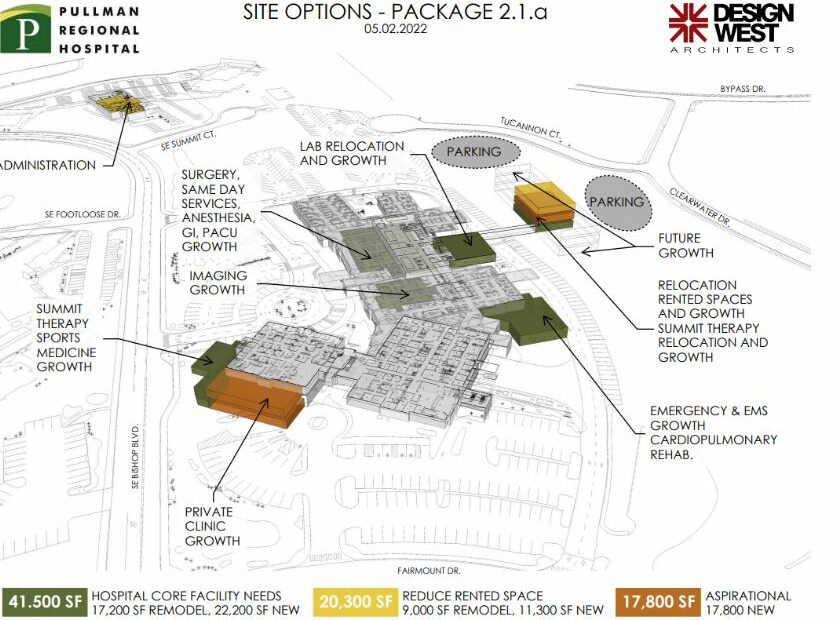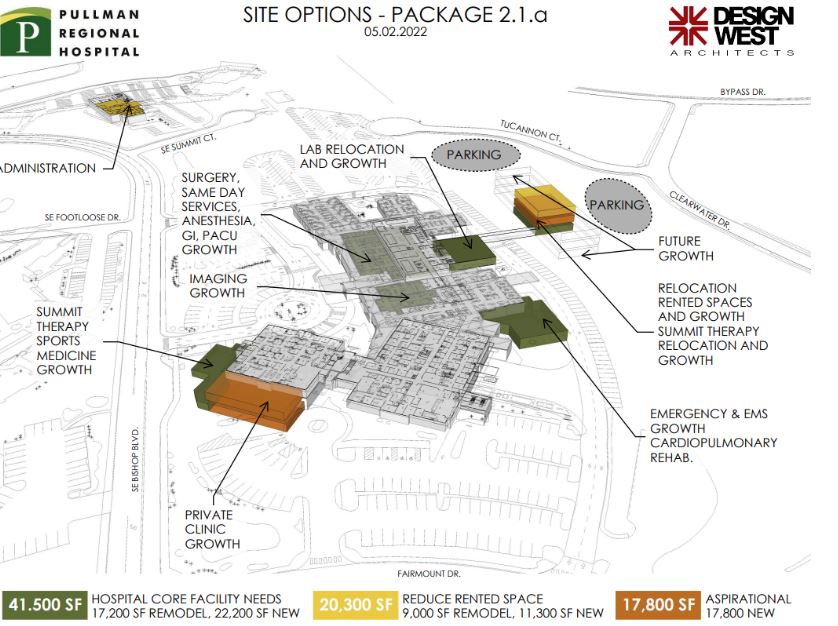
Commissioners Approve Bond for Pullman Regional Expansion
Listen
(Runtime 1:43)
Read
Staff at Pullman Regional Hospital said at a Wednesday press conference that many of the items in the hospital’s $45 million expansion plan are necessary to maintain basic services including the emergency department.
The expansion, funded partially by a $27.5 million bond commissioners approved for the Nov. 8 ballot on Tuesday, would include growing the emergency department by 50-60%, bringing more services onto the central campus, additional space for sleep study and labs, and additions of several specialty services.
The bond could range anywhere from 20 to 30 years. CEO Scott Adams said the exact cost for residents was yet to be determined, but one estimate of 76 cents per thousand dollars assessed home value was “in the ballpark” of what they expected.
“If the bond passes, (that) is the first time we’ll really know it,” he said. “I couldn’t narrow it down to the penny, but that’s not out of line.”
When the hospital moved into its current space in 2004, there were roughly 200 employees, Adams said. Today, that number is closer to 600, some of whom are in rented office spaces.
“We have limited space for our nurses and staff, just places to change their clothes,” said Orthopedic surgeon Ed Tingstad. “We’re just asking for nuts and bolts. just places to change their clothes and place a locker, and let a doctor work in the emergency room.”
The number of patients has also increased, Tingstad said. The hospital’s emergency department saw roughly 7,000 visits per year in 2004. In 2020 it was 11,111, and 2021, that number reached 12,676.
Some other specialty care in the expansion plan, including dermatology and oncology, is aimed at reducing the Pullman Regional’s reliance on other hospital systems that have a limited ability to take transfers following the pandemic.
“COVID made us realize that we really can’t rely on the typical tertiary referral centers that we have in the past, that Spokane, Seattle, Boise can’t take our patients any longer,” Tingstad said. “In these difficult medical times, we realized that we had to be able to care for our own.”
Though critical access hospitals such as Pullman Regional usually offer fewer specialty services, Adams said their hospital is unique in the needs and expectations of the community.
“The makeup of the Palouse between Moscow and Pullman is a lot of well educated people who have spent a lot of time in metropolitan areas during their careers,” he said. “So they have expectations for what the place they want to call home would provide them.”
Information on the expansion can be found at pullmanregional.org/expansion, or by emailing info@citizensforprh.org.
This report is made possible by the Lewis-Clark Valley Healthcare Foundation in partnership with Northwest Public Broadcasting, the Lewiston Tribune and the Moscow-Pullman Daily News.
















